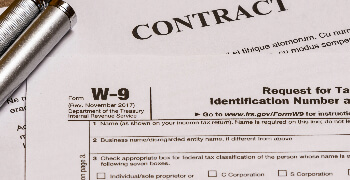
How an omnichannel retail strategy could help your business thrive
Mobile-first. Cloud-first. Digital transformation. Internet of Things.
There’s always a new technology strategy for cutting edge businesses. You may have heard of “omnichannel” as the latest thing the cool kids are adopting. But like the other examples, it’s not just a buzzword — there can be a huge benefit to properly implementing an omnichannel retail strategy.
For the uninitiated, we’ll take a look at how even small businesses can create successful omnichannel experiences by answering the following questions:
What is omnichannel retail?
First, let’s cover what it isn’t: omnichannel is not a synonym for multichannel.
Multichannel retail is the ability for customers to transact or interact with brands in more than one form, say, online, in-store, or in an app.
Omnichannel retail is when a customer has a connected experience across those forms.
For example, I was on the couch checking email on my phone. I saw a message for some skincare products I wanted. I tapped and went to the offer page within the store’s app. I added a few items to my cart before my husband came back and we resumed the TV show we were watching.
Later that evening, I was on my computer when I remembered my idle shopping cart. I logged in on the brand’s website to finish shopping and check out. I decided to try a new brand, knowing I could stop by a store to exchange my purchase if I didn’t like it. I could even ask the person behind the counter to look up my online order history to remind me which brands I prefer.
Contrast that story with a recent experience I had with concert tickets. I had early access to tickets at a nearby venue. I got a standard email list message about presale tickets. I checked my inbox for an email with my member access code, but couldn’t find it.
I logged in to their site. Clicking on the concert link gave me no information about early access and my account information didn’t include the code; the customer databases weren’t linked on the backend. It was after hours, so I couldn’t call anyone at the venue.
The next morning the general access sale began, and when I logged in, the seating I wanted was going for three times the amount on the resale market. I did not buy the tickets.
With an omnichannel retail experience, brand interactions are seamlessly connected, regardless of the form. A company has a complete customer history and, for better or worse, it’s really easy and rewarding for customers to make purchases. Exhibit A: My skincare stash.
Why is omnichannel trending?
With roots in the 1990s, online shopping really got going in the mid-aughts. Broad adoption and popularity picked up from there, due largely to more reliable internet tools with more robust security measures.
COVID-19 turned a maturing retail channel into a necessary survival tool for many brands. With storefronts shuttering all over the world, shoppers and sellers relied on the internet to maintain commerce. With that shift, the ecommerce industry has gotten even more competitive.
Add in ongoing supply chain disruptions, inflation hitting global markets, and staffing shortages for a variety of reasons. It’s no wonder retailers are looking for ways to stay competitive and increase profits.
An omnichannel retail strategy allows consumers to not just meet customers where they are, it acknowledges that customers have different preferences for different situations. Policies allowing customers to buy online and return in-store are a very successful example of this.
Like with rapid shipping or free returns, the more customers benefit from omnichannel experiences, the more they come to expect it. For now, not having an omnichannel strategy may simply earn you a strike; in the future, it may be a deal breaker.
Should I make an omnichannel retail strategy?
Creating the right omnichannel strategy for your business depends largely on what you sell and who your customers are. Not every business needs to invest in every platform. For instance, if your target market isn’t on social media, integrating Instagram purchases shouldn’t be a high priority.
Common omnichannel platforms include:
- Physical storefronts
- Pop-up shops or trade show booths
- Websites
- Marketplace stores
- Apps
- Social media
- Phone line
Before you implement a new strategy, it’s important to understand the challenges you could be facing and how to mitigate them. The challenges of implementing an omnichannel strategy include:
Cross-channel communication
It’s vital to integrate all your channels for accurate, up-to-date information. Your customer needs a seamless experience, which can’t happen if there are crossed wires and data delays.
Inventory management
When you have multiple avenues for purchases and returns, you need a sophisticated inventory system to track where everything is at all times. For instance, if a customer buys online for in-store pickup, the goods have to be available.
Channel management
You need to have people in place to provide the service you promise for each channel. That means properly staffing a store, managing social media accounts, maintaining a website, and having live people available to answer the phone.
Tax compliance
Omnichannel retail can create tax compliance complications. If you start to increase sales in other states, you can trigger new economic nexus obligations. You can also create tax obligations if you have out-of-state inventory, employees, or affiliates to support your omnichannel activities.
While the challenges can seem daunting, the benefits of a retail omnichannel strategy can outweigh the costs. A well-executed strategy can benefit your business by:
Expanding your audience
The more channels you have, the broader your customer base. The better you meet their needs, the more likely you are to retain customers.
Creating more meaningful customer relationships
By reaching customers through different channels, you’ll gain more information about their preferences, concerns, and habits. The more you know about your customers, the better service you can provide.
Providing greater brand visibility
When customers see your brand online, while shopping, in email, on their phone, and in their social media feed, it keeps you top of mind when they need your products or services.
Giving you a competitive edge
The easier and more cohesive a shopping experience is, the more likely customers are to return to you over your competitors.
How do I prepare to take my business omnichannel?
It pays to prepare for an omnichannel strategy. It’s more than adding a few buy now buttons to social media posts or sending customers to stores for pickups or returns. Instead, work with omnichannel pros to develop how you want to incorporate various omnichannel platforms with your current business model.
As previously mentioned, it’s important to conduct some customer research to find out where you’ll get the greatest return on omnichannel investments. Find out where your customers are shopping, where they want to shop, and how they’d like to engage with your brand. That information will help you prioritize where you concentrate your efforts.
Perhaps most important, you’ll need to integrate your back-end systems to work across channels. Your inventory, POS, ecommerce, personnel management, and financial platforms all need to operate with the same information. Otherwise, you’ll end up having to tell all those social media followers you’re out of stock, or risk overrunning your store staff with inadequate purchase and return information. Both can create negative sentiment for your brand.
How Avalara can help with your retail omnichannel strategy
While Avalara can’t take you from offline to omnichannel, we can help you avoid the tax compliance pitfalls that come with a multifaceted customer experience.
By automating tax compliance, you can more easily track nexus thresholds, calculate more accurate tax rates across tax jurisdictions, prepare and file returns in multiple states and counties, and pull information in the event of an audit.
One of the greatest benefits of incorporating Avalara with your omnichannel strategy is the ease of integration. A well-designed tech stack is vital to a successful omnichannel strategy. Avalara offers over 1,200 signed partner integrations for a variety of business systems. Which means we likely have a prebuilt integration for your ERP, accounting program, inventory management system, POS, and other platforms.

Your competitors live by this annual report
Trusted by professionals, this valuable resource simplifies complex topics with clarity and insight.
Stay up to date
Sign up for our free newsletter and stay up to date with the latest tax news.













